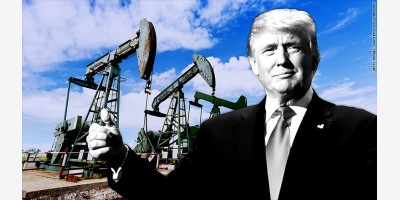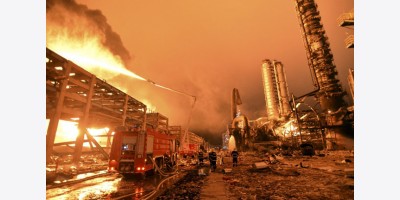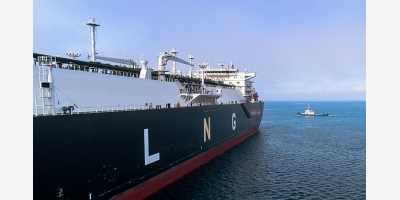Volatile oil prices are expected to finish the year near current levels, even though crude may make another plunge in the second half of 2015, according to a new CNBC Oil Survey.
The respondents were uniform in their view that OPEC will take no action at its meeting this week. But the upstart U.S. shale industry has proven trickier to predict, and answers were nearly equally split on whether it would increase, decrease or keep production steady this year.
Seventy-seven percent of the participants in the survey say they believe oil prices have already hit their lows for the year. Nine percent expect even lower prices, while 14 percent say they are not sure.
The survey, conducted in the past week just ahead of OPEC's meeting in Vienna, included 22 top industry analysts, traders and strategists. Their average forecast for West Texas Intermediate oil for year end is $60.80, while they expect Brent to reach $65.91 per barrel. By the end of 2016, they expect roughly a $10 per barrel increase in each over 2015 levels.

While none of the participants expects OPEC to change its production quota at Friday's meeting, by next year, 23 percent expect the Organization of the Petroleum Exporting Countries to agree to a cut.
Interestingly, 32 percent thought there would be an increase in U.S. production, another 32 expect a decrease, while 36 percent expected production to stay around the same 9.3 million barrels a day level it was several weeks ago. In the past week, U.S. oil production was nearly 9.6 million barrels a day.
OPEC, led by Saudi Arabia, kept production quotas steady at its November meeting, adding to another downward spiral in already falling oil prices. Prices have since stabilized and West Texas Intermediate was trading at around $60 a barrel Wednesday, after hitting a low near $42 in mid-March.
"Oil prices are going to be volatile for the next 18 plus months, trading on a daily basis in reaction to fluctuations in the U.S. dollar, rig count, inventories and geopolitical news. However, the most meaningful underlying driver of price over the intermediate term (vs. day-to-day) is going to be the likely decline in global production driven by underinvestment combined with ongoing demand growth," Tudor Pickering co-president Dan Pickering wrote in the survey.
Most of the respondents—92 percent—see supply and demand factors or dollar fluctuations as the biggest elements in setting oil prices currently. The two factors received an equal amount of votes as the main influence on prices, while just 5 percent saw OPEC actions as the major element and the rest cited geopolitical events.
Eighty-six percent said they expect global demand to continue to rise in 2015, and 91 percent expected it to rise all throughout 2016.
The respondents' forecasts for WTI for year end 2015 ranged from $45 to $75 per barrel and $49 to $79 for Brent.

The survey also focused on what would happen to oil prices if the U.S. were to lift the ban on exporting crude. Forty-six percent said they expect the price of oil to rise, while 36 percent said it would have no impact. Another 14 percent said lifting the ban could result in lower prices.
In comments submitted with the survey, several respondents said they see another selloff this year even if oil prices already set their lows for 2015.
Tom Kloza, co-founder and head of global energy analysis at OPIS, said oil and gasoline should slide in August through December. "Only a Gulf Coast hurricane might avert that action, and most hurricanes impact demand more than supply," he said.
Kyle Cooper at IAF Advisors said it's unclear whether the bottom is in yet for the year.
"I think there is roughly 50/50 chance the low is in. Big U.S. product builds during the summer and a European/Greece debacle that results in a plunging euro and surging U.S. dollar may lead to new lows," Cooper wrote. But another view from a participant is that the euro could strengthen and push up the price of oil.
Michael Cohen, head of energy commodities research at Barclays, said in an interview that he does believe the lows are in for the year, but he sees potential for a correction in the third quarter.
"After that I think we'll start moving back into the $70 area by the end of 2016 and probably mid-$60s by the end of the year for Brent."
Cohen said the market could be pressured by new supply from countries outside the U.S., like Iran.
"I do think we'll see a slowdown in the U.S. production. Elsewhere, we still have the ability to increase output in Iraq," he said, adding there also could be more oil coming from Iran even if nuclear negotiations are not completed. "I think that's all going to hang over the market."
Alan Harry of Spartan Commodity Fund wrote that the market will be oversupplied when Iran returns. "I feel the markets will over react and cut real production bringing the price of crude to higher levels in 2016," he said.
Iran has been one of the wild cards for the oil market, as it is unclear whether its talks on a nuclear agreement will lead to a deal this month that allows Iran to return to the oil market.
"The rebalancing of global oil supply and demand is clearly progressing while inventories will likely remain in surplus for a few more quarters, by the middle of next year things should be tight again. Risk to our central scenario feel biased to the upside and center on supply from the Mideast," wrote Jan Stuart, global energy economist at Credit Suisse.
Patti Domm/ CNBC























